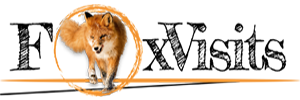Advertising’s history intertwines with commerce itself, aiding market creation by generating awareness and desire for products and services. From using papyrus in ancient Egypt to advertise goods and political campaigns to utilizing bronze plates in 10th century China to promote high-quality needles, advertising has always been about reaching potential customers.
This deep-rooted relationship between advertising and market creation continues to evolve. For instance, the emergence of digital advertising has significantly heightened the precision and speed of strategic promotion, thanks to programmatic technology that enables real-time ad exchanges. You can see this in the exponential growth of the online advertising industry, where Google commands over 29% of global digital ad spend and navigates an annual revenue exceeding $150 billion from its ad network alone. Likewise, Facebook Ads dominate a substantial 23.6% of global digital ad revenue.
Throughout advertising history, strategic promotion has been pivotal in shaping consumer demand and fostering industry growth. The transition into an era of national distribution networks, like those set up by railroads in the 19th century, allowed products to reach consumers on a larger scale. Exemplified by companies like Singer Sewing Machines, manufactured in New Jersey and sold as far as California, advertising bridged the gap between producers and consumers, making it possible to introduce new markets and sustain them.
Even today, the symbiotic relationship between advertising and market creation continues, creating a vibrant tapestry of ever-evolving methods that capture consumer interest and support industry growth.
The Genesis of Advertising: From Ancient Egypt to Renaissance Italy
Advertising’s roots can be traced back to ancient civilizations, where the seeds of modern-day marketing were sown. From the use of papyrus in Egypt to the emergence of commercial publications in Renaissance Italy, each step in the journey of advertising has contributed significantly to its evolution.
Ancient Methods: Papyrus and Bronze
The earliest forms of ancient advertising were evident in ancient Egypt around 2700 BCE. Papyrus sheets were used to create posters, which announced various events and services to the public. These ancient advertising techniques served as a precursor to modern print advertising origins. Fast forward to 10th century China, and we encounter a bronze plate, which is one of the earliest known forms of brand promotion. This artifact advertised quality needles, emphasizing the importance of brand reputation even in those times.
The Rise of Gazette Ads
The development of print advertising origins advanced significantly with the invention of gazettes during the Renaissance. In Venice, trade guilds began placing ads in these periodicals, which featured a mix of news and commercial information. These gazette ads provided a platform for merchants to reach a broader audience, marking a transformative phase in advertising history.
Commercial Revolution in Renaissance Italy
The Renaissance period propelled the advertising industry forward, particularly in Venice, where the Venetian trade guilds played a pivotal role. The widespread use of gazette ads became instrumental in the establishment of global commerce centers. This period also laid the groundwork for the modern publishing industry, further cementing the essential role of advertising in commerce and communication.
Understanding the genesis of advertising from ancient advertising methods to the innovative practices of Venetian trade guilds shows how the art of persuasion has evolved. It also underscores the pivotal role print advertising origins played in shaping the modern landscape of marketing.
The Emergence of Modern Advertising in the 19th Century
The 19th century marked a significant turning point with the rise of modern advertising. As at-home production shifted towards purchasing goods, the expansion of the railroad industry became a major catalyst. This era also saw the emergence of a consumer culture, with new advertising techniques evolving to keep pace with these changes.
The Influence of the Railroad Industry
The railroad industry influence on modern advertising was profound. Railroads played a pivotal role in shaping a national distribution network, facilitating the movement of goods like Singer Sewing Machines from their production locations to various parts of the United States. This allowed manufacturers to reach a much broader audience, creating a truly national market. Advertising became the bridge between these manufacturers and consumers, increasing awareness and preference for branded products.
Mass Production and National Distribution
With the surge in mass-produced items and the development of modern distribution networks, advertising had to adapt to meet the needs of a growing national market. Companies began to invest heavily in marketing to promote their products, leading to the rapid consumer culture emergence. New advertising mediums, such as newspapers, posters, and later, magazines, began to dominate, offering a diverse range of platforms to reach potential buyers. This period laid the foundation for the comprehensive advertising techniques we see today.

How Did Advertising Create Markets in Early 20th Century America
The early 20th century saw the dramatic rise of advertising as a powerful tool in shaping consumer markets in America. By creating persuasive and relatable narratives, advertisements began to redefine consumer identities and foster brand loyalty. Advertising expenditures surged from $200 million in 1880 to nearly $3 billion by 1920, underscoring the industry’s explosive growth during this period. This trend laid the foundation for iconic ad campaigns and the emotional marketing strategies that would dominate the era.
![]()
The Birth of Iconic Ad Campaigns
Many of the early 20th-century iconic ad campaigns focused on embedding products into the cultural fabric. From Pears soap’s pioneering use of branded slogan, “Good Morning. Have you used Pears’ soap?” to the De Beers campaign featuring the unforgettable tagline, “A Diamond Is Forever,” these advertisements transcended simple product promotion. They formed emotional connections with consumers, turning diamonds and soaps into symbols of success and love. Such memorable campaigns not only drove consumer engagement but also established long-term brand loyalty.
Establishing Emotional Connections
A crucial element of these iconic ad campaigns was their ability to connect with consumers on a deeply emotional level. The concept of emotional marketing took center stage as advertisers began to recognize the power of storytelling. Be it through ads for health and beauty products that promised better living or campaigns for household goods that aimed to improve quality of life, emotional marketing proved essential in influencing purchasing behaviors. The narrative-driven approach ensured that consumers were not just buying a product, but also buying into a lifestyle or an ideal.
The period’s advertising landscape is well-documented in collections such as the Early Advertising of the West, which features over 450 print ads from 1867 to 1918. These ads provide a rich glimpse into the social conditions and consumer priorities of the time. From medical treatments to hygiene products, and from transportation to fashion, the advertisements covered a myriad of themes, always with an underlying aim to enhance consumer engagement and foster brand loyalty.
For a deeper understanding of how this advertising boom crafted markets, you can explore more about this pivotal era in American advertising here.
How Do Danglers in Advertising Help in Creating Markets?
Danglers in advertising are eye-catching tools that grab attention and influence purchasing decisions. By strategically placing them in high-traffic areas, they create curiosity and drive engagement. Businesses often ask, “what is a dangler advertising?” It’s a smart way to enhance brand visibility and turn idle consumer moments into impactful marketing opportunities.
The Golden Age of Advertising: 1900 – 2000
The 20th century, often referred to as the golden age of advertising, was an era of unparalleled innovation and creativity. Advertising legends like David Ogilvy, Leo Burnett, and Helmut Krone were at the forefront, producing timeless creative ad campaigns that not only captured the public’s imagination but also molded consumer behavior. Groundbreaking campaigns such as “Drink an Orange” and the iconic Marlboro Man are perfect examples of how advertising during this period created new consumer habits and expanded market boundaries.
The transition into television in the mid-20th century added a new dimension to this golden age. The first legal TV commercial in America aired on July 1, 1941, opening the floodgates for a revolutionary form of advertising. High-profile agencies like McCann Erickson and Ogilvy & Mather harnessed the visual and emotional potential of television to craft narratives that resonated deeply with audiences. This era saw the birth of the unique selling proposition, introduced by Rosser Reeves in 1930, which further pushed market innovation and shaped the way brands communicated their distinct offers to consumers.
As the century progressed, the landscape of advertising continued to evolve, especially with the advent of online advertising in 1992. The first banner ad by AT&T in 1994 achieved a remarkable click-through rate of about 44%. By 1995, Yahoo had created the first keyword-based ad, further transforming digital marketing. The accessibility of billions of data points about consumers, available through platforms like Google and Facebook, underscores the lasting consumer impact of these pioneering efforts. This era firmly established the enduring principles and techniques that continue to drive advertising success today.








